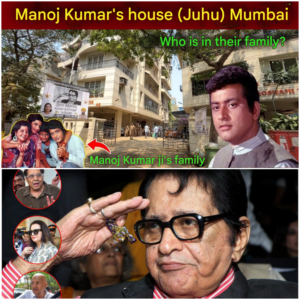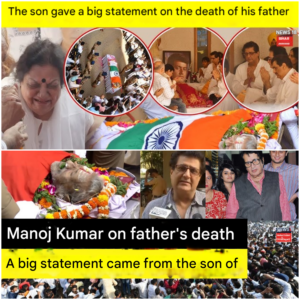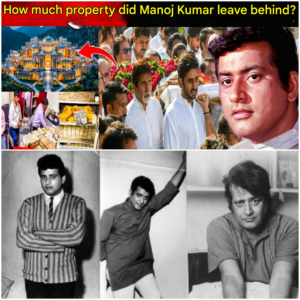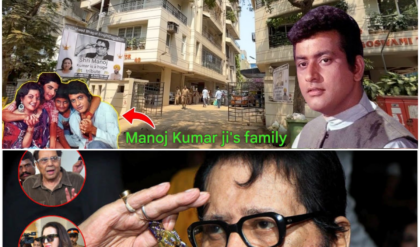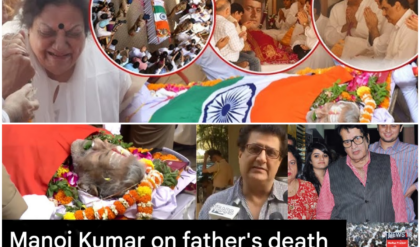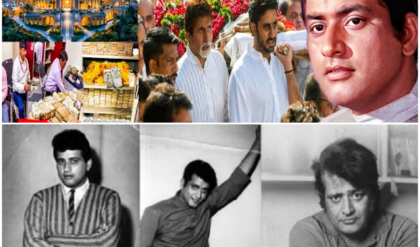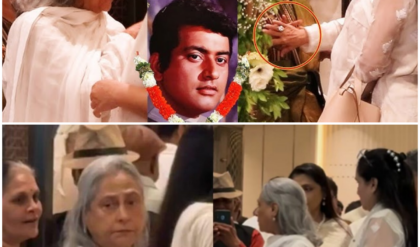The reason behind the ruin of the actor | TV Serial Film Actor Real Story.
.
.
.
play video:
The Rise and Fall of Sushant Singh Rajput: A Journey of Talent, Triumph, and Tragedy
By Staff Reporter | April 2025
It has been nearly five years since India lost one of its most promising and beloved actors—Sushant Singh Rajput. His untimely death on June 14, 2020, sent shockwaves across the country and sparked a wave of mourning, questions, and controversy. But who was Sushant Singh Rajput? What led a bright young man with brilliance, talent, and success to a place of such deep despair?
This article retraces the extraordinary journey of a man who defied the odds, conquered both television and cinema, and left behind a legacy that still echoes in the hearts of millions.
Humble Beginnings in Patna to the Dreamscape of Mumbai
Born on January 21, 1986, in Patna, Bihar, Sushant Singh Rajput—originally named Gulshan—was not born into the film industry or a legacy family. His path to fame was carved entirely by his own determination and perseverance. His family wanted him to become an engineer, and he did fulfill that dream—at least in part.
A brilliant student, Sushant cleared several entrance exams and secured admission to Delhi College of Engineering (now Delhi Technological University). But while engineering might have been his academic pursuit, it was dance and performance that called to his soul.
Sushant joined Shiamak Davar’s dance classes during his college days, initially just to pursue a hobby. Little did he know that his life was about to change forever.
First Glimpse of Stardom
In 2005, he got a chance to perform as a background dancer at the Filmfare Awards—an opportunity that brought him face-to-face with the glittering world of Bollywood. That was the moment Sushant made a decision: he no longer wanted to be an engineer. He wanted to be an actor.
He dropped out of college, moved to Mumbai, and joined Nadira Babbar’s theatre group “Ekjut” to hone his acting skills. At the same time, he also enrolled in Barry John’s acting classes and continued working as a background dancer to support himself.
In 2008, destiny knocked again. While performing in a play, Sushant caught the attention of Balaji Telefilms’ creative team. He auditioned for a television show and landed the role of Preet Singh in the serial Kis Desh Mein Hai Meraa Dil. While his character was written off early, the audience had already fallen in love with him.
Recognizing his rising popularity, Balaji Telefilms brought him back for another show—one that would become a household name.
The Rise of a Television Superstar
In 2009, Pavitra Rishta premiered on Zee TV. Sushant played the lead role of Manav Deshmukh opposite Ankita Lokhande. The show’s success was phenomenal. Week after week, it topped the TRP charts. Sushant’s portrayal of the honest and loving mechanic won him critical acclaim and a massive fan following.
His chemistry with Ankita Lokhande also transcended the screen. The two became one of the most talked-about couples in Indian television, both on and off-screen.
But while he had achieved stardom on television, Sushant wasn’t content. He wanted more. He wanted cinema.
Transition to Bollywood: A Dream Realized
Sushant took a bold step by quitting Pavitra Rishta at the peak of his career. In 2013, he made his film debut with Kai Po Che!, directed by Abhishek Kapoor and produced under the UTV banner. The film was a critical and commercial success. Sushant’s portrayal of Ishaan—a former cricketer turned coach—was layered, powerful, and heartfelt.
What followed was a series of successful films: Shuddh Desi Romance, Detective Byomkesh Bakshy!, PK (in which he had a small but memorable role as Sarfaraz), and of course, the monumental M.S. Dhoni: The Untold Story in 2016. His performance as India’s cricketing legend was hailed as one of the finest biopic portrayals in recent times.
He continued to act in films like Kedarnath, Sonchiriya, and Chhichhore—each showcasing his range and depth as an actor.
The Shadows Behind the Spotlight
Despite his success, Sushant’s career faced unusual hurdles. He was reportedly dropped from big-banner projects, allegedly due to lobbying, internal politics, and a lack of support from major production houses.
One of the most heartbreaking moments of his career came when the film Paani, directed by Shekhar Kapur and backed by Yash Raj Films, was shelved. Sushant had turned down multiple roles to commit to the project. When the film was canceled, it left him devastated.
He was also reportedly removed from two major Sanjay Leela Bhansali projects—Goliyon Ki Raasleela Ram-Leela and Bajirao Mastani—despite initial confirmations. These roles eventually went to Ranveer Singh.
Another setback was the much-delayed film Drive, produced by Karan Johar’s Dharma Productions. The movie was never released theatrically and was instead pushed to digital platforms with minimal promotion, wasting two crucial years of Sushant’s career.
The Whisper Network and Isolation
As industry gossip spread, an unofficial “boycott” was believed to have formed around Sushant. Rumors suggested that major production houses began avoiding him, and insiders say this started taking a toll on his mental health.
There were allegations that prominent celebrities spoke against him behind closed doors, branding him as “unprofessional” or “difficult,” despite his spotless public image.
Meanwhile, his personal life also saw turmoil. His long-term relationship with Ankita Lokhande ended. A new relationship with actress Rhea Chakraborty began, but it too became embroiled in controversy later on.
By 2020, Sushant was reportedly battling depression. According to close friends, he was undergoing treatment and taking medication. But in the media and on his social platforms, he continued to appear cheerful, optimistic, and full of life—posting about astrophysics, his telescope, and his dreams.
The Final Days
On the morning of June 14, 2020, Sushant Singh Rajput was found dead in his Mumbai apartment. He was just 34 years old.
Initial reports labeled his death a suicide, allegedly due to depression. But the case quickly turned into a media storm. Allegations of foul play, drug abuse, financial exploitation, and involvement of high-profile individuals came pouring in.
Multiple investigative agencies—the Mumbai Police, the Enforcement Directorate (ED), Narcotics Control Bureau (NCB), and the Central Bureau of Investigation (CBI)—launched probes. Rhea Chakraborty and her family were pulled into the spotlight, and the country’s news channels ran daily stories for months.
Yet, even after years, the mystery behind his death remains unresolved. The CBI has yet to release a conclusive report.
The Unfinished Legacy
Sushant was more than an actor. He was a thinker, a dreamer, a science enthusiast, and a passionate advocate for education. He had bought land on the moon. He had set up scholarships for students. He dreamt of building a free school using VR technology. He often shared his “to-do list” which included things like “learn guitar,” “do 100 squats,” “read quantum physics,” and “meditate.”
He wasn’t just chasing stardom—he was chasing meaning.
In his interviews, Sushant often spoke about being misunderstood in the industry. “I’m not here to fit in. I’m here to stand out,” he once said. And he did—through talent, through conviction, and through kindness.
The Industry’s Introspection
Sushant’s death triggered a national conversation about mental health, nepotism, and the dark side of Bollywood. Stars, fans, and activists called for systemic change.
His fans formed global communities—planting trees in his name, holding virtual memorials, and continuing to push for justice. The phrase “Justice for SSR” became a movement.
But the question still lingers: Could this have been prevented?
News
How was Manoj Kumar able to keep this secret hidden for 60 years? Manoj Kumar Secret Love Story
How was Manoj Kumar able to keep this secret hidden for 60 years? Manoj Kumar Secret Love Story . . . play video: How Manoj Kumar Kept His Secret Love Hidden for 60 Years In the golden era of Indian…
Fans were in tears when they found out what happened to Avirbhav? Superstar Singer Season 3 | Superstar Singer Avirbhav
Fans were in tears when they found out what happened to Avirbhav? Superstar Singer Season 3 | Superstar Singer Avirbhav. . . . play video: What Really Happened to Avirbhav? Clearing the Air on the Superstar Singer Season 3 Winner’s…
Visit Manoj Kumar’s House in Mumbai | Manoj Kumar Family | Shocking Facts!
Visit Manoj Kumar’s House in Mumbai | Manoj Kumar Family | Shocking Facts! . . . play video: Inside Manoj Kumar’s Home in Juhu: A Final Glimpse Into the Life of Bharat Kumar After His Passing On April 4, 2025,…
Manoj Kumar News Update: Son gave a big statement on father’s death | Manoj Kumar Son
Manoj Kumar News Update: Son gave a big statement on father’s death | Manoj Kumar Son. . . . play video: Manoj Kumar News Update: Son Kunal Goswami’s Heartfelt Tribute—What Was Said at the Funeral of India’s ‘Bharat Kumar’ The…
How much property did Manoj Kumar leave behind? Who will be the owner? Manoj Kumar Net Worth
How much property did Manoj Kumar leave behind? Who will be the owner? Manoj Kumar Net Worth . . . play video: Bharat Kumar’s Final Bow: The Life, Death, and Legacy of Manoj Kumar—What He Left Behind The Indian film…
Manoj Kumar had become like this in his last days, this dangerous disease took his life! Manoj Kumar Death Reason
Manoj Kumar had become like this in his last days, this dangerous disease took his life! Manoj Kumar Death Reason . . . play video: End of an Era: The Final Days and Legacy of Manoj Kumar, Bollywood’s ‘Bharat Kumar’…
End of content
No more pages to load


